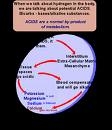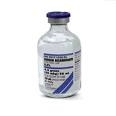| Home > 5. Sodium Bicarbonate Injection > 5.2 Injection |
 Previous Next Previous Next  |
|
|
|
|
A sterile aqueous solution of sodium bicarbonate.
 How is it Given? How is it Given?In any case, dilute diazepam (for example 10 mg in 10 mL saline) has been given intravenously for years and works very well. It is standard practice and certainly far easier to titrate than the 10 mg in 1 mL in the ampoule. [2]
It is given to patients who have very low potassium levels or who are unable to take tablets. It is also used in digoxin poisoning.[3]
Further, given the lack of evidence supporting its use, we cannot condone bicarbonate administration for patients with lactic acidosis, regardless of the degree of acidemia. [4]
 The Ration The RationBlood samples were collected at intervals up to 24 hours after drug administration for measurement of pantoprazole concentration by high- performance liquid chromatography (HPLC) and estimation of pharmacokinetic values. A separate study was conducted to determine pantoprazole's stability in the suspension for up to three months at 25, 5, and -20 degrees C; concentrations were measured by HPLC. [6]
Anolyte-treated plants also showed an increase in chlorophyll concentration and an improved CO2 uptake. It is clear from this study that anolyte stimulated photosynthesis in chrysanthemum plants, thus resulting in longer stems with more and larger flowers and leaves. [7]
Rations ES and ESB increased the content of polyunsaturated fatty acids in milk, but decreased milk fat content, compared to rations PAB and PA. Ration ESB led to the greatest milk CLA content, by a synergy between the high amount of dietary fat, and the action of bicarbonate plus straw, favouring trans 11 isomers of CLA and C18:1, presumably via a ruminal pH near neutrality. [8]
 Sodium Bicarbonate Injection Sodium Bicarbonate InjectionSodium Bicarbonate Injection may also be indicated in severe diarrhea which is often accompanied by a significant loss of bicarbonate. [1]
Sodium Bicarbonate Injection, USP is a sterile, nonpyrogenic, hypertonic solution of sodium bicarbonate (NaHCO) in water for injection for administration by the intravenous route as an electrolyte replenisher and systemic alkalizer. Solutions are offered in concentrations of 7.5% and 8.4%. [2]
|
|
|
|
|

